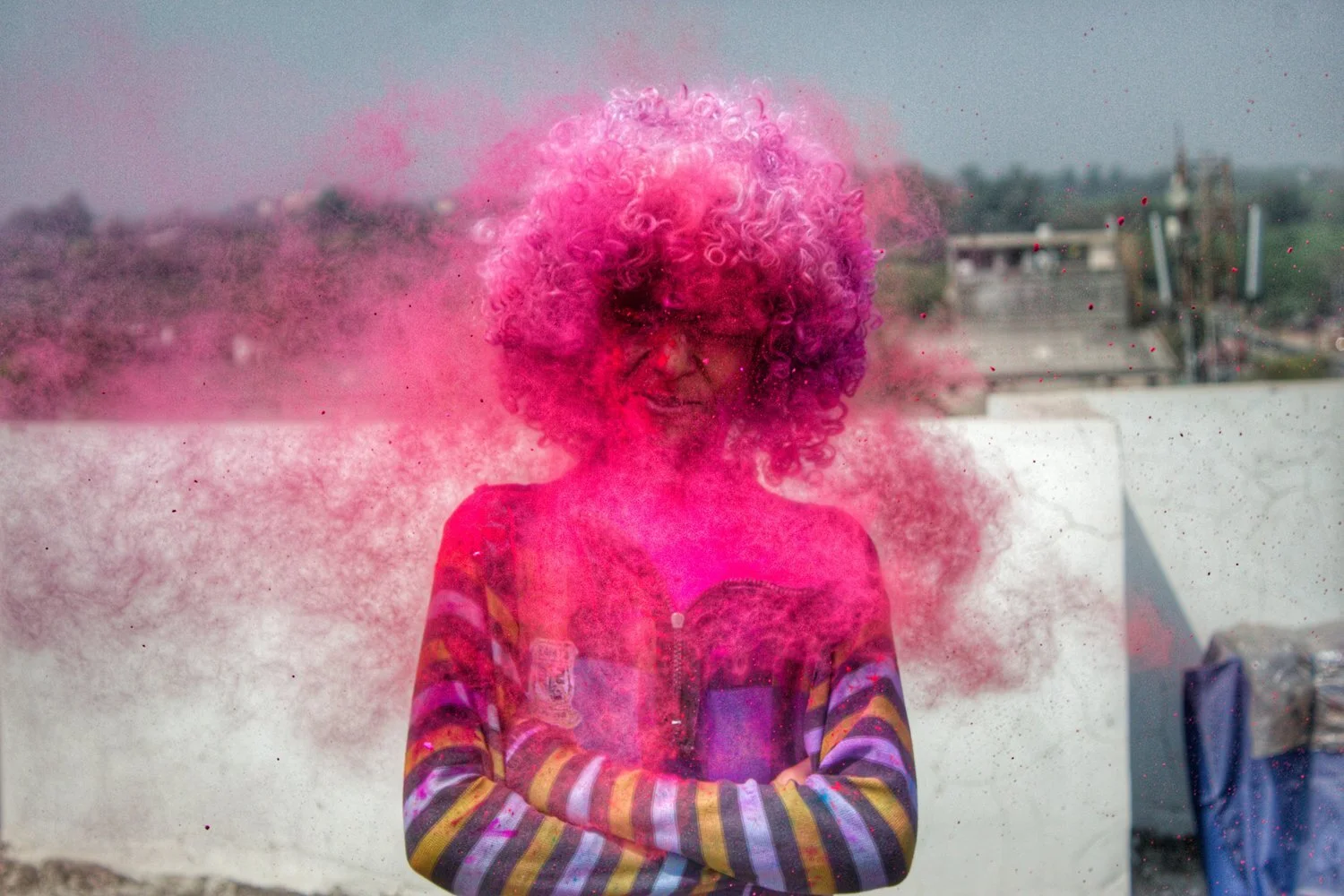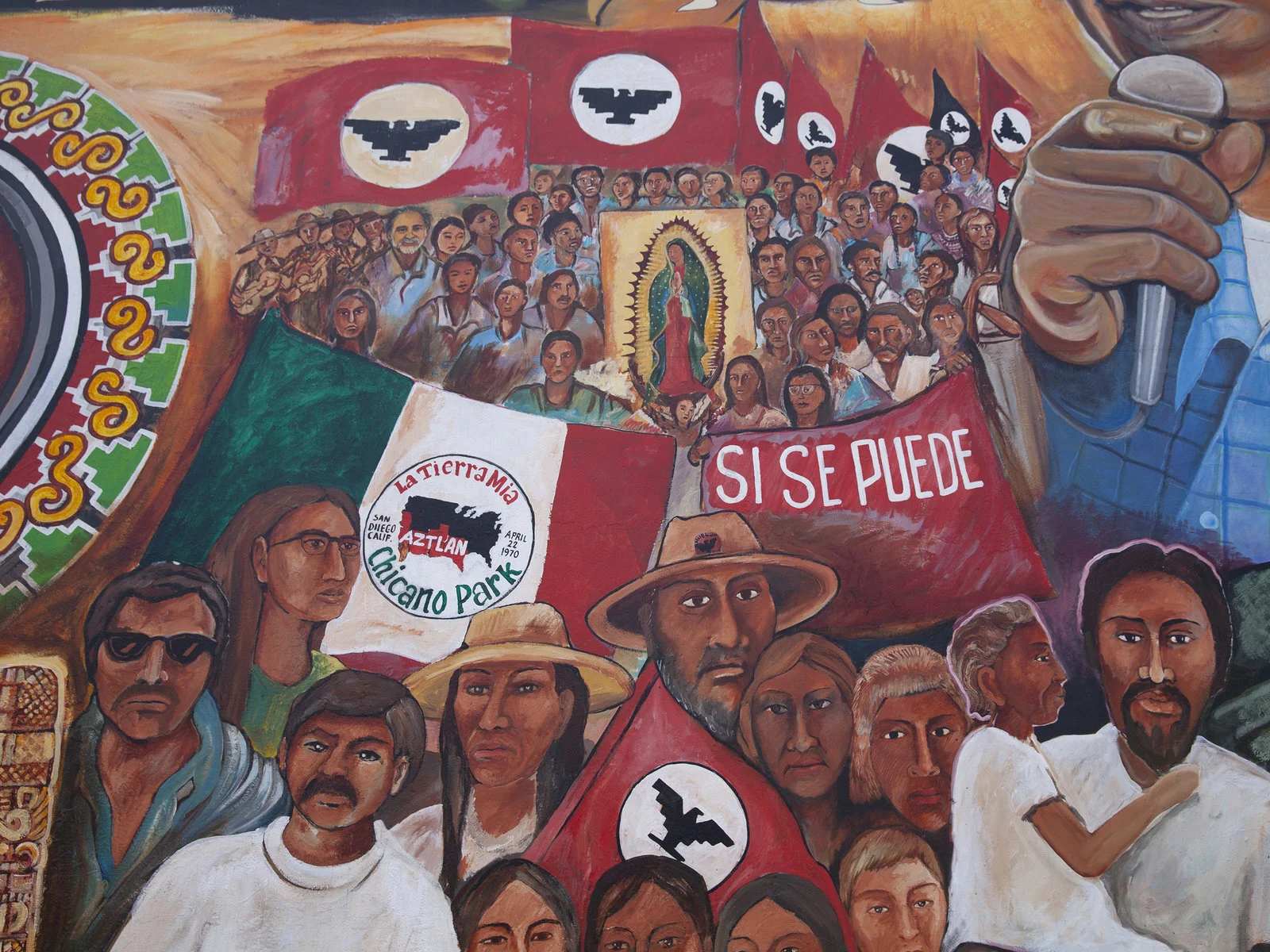Viva la Resistencia: A Mixtape for Latinx Heritage Month
A young Mexican feminist takes part in the Glitter Protests in August 2019.
As Latinx Heritage Month (September 15 - October 15) comes to a close, we’d like to share a few multimedia contributions from our IofC USA team members that provide a lens into the diverse historical and cultural experiences of Latinx global communities. It is important that we recognize and call out interconnected systems of injustice, racism, violence and intimidation that continue to wreak volatility in the lives and families of Latinx peoples across the U.S., North America and world.
With this, we turn to what visual artist, Alfonso Perez Acosta, terms “a right to joyful resistance” - where the pleasures and joys of human life can not be denied to communities of color who demonstrate over and over their determination - against all means - to grow and thrive.
The Glitter Revolution



“ I think it is key to talk about this movement, not only because it is led by young women, but also because it is talking about the need to decolonize feminism and open space for feminist movements that also name racism within the feminist movement. I also love that this is a movement using something as “soft” and “girly” as glitter to denounce sexual violence and feminicide. Women are all the time demanded to behave, to look beautiful, to shine... well, there are different forms of shining, by protesting and showing that together we can do more.”
You Say Chicano, I Say
Chicano Park in San Diego. The park, built under a highway overpass, has become a symbol of the Chicano rights movement. It was built after residents of the surrounding Mexican-American neighborhood occupied the land in 1970 and demanded a park after officials reneged on promises to build one there. Adrian Florido/Adrian Florido (NPR website)
“I must admit that my knowledge of Latinx history, culture and heritage is seriously limited. I’m lucky that podcasts like NPR’s Code Switch exist and provide access to stories about race and identity so I can start learning. This episode is about the evolution of the Chicano Student Movement of Aztlan, which started during the 1960s Civil Rights movement and still exists today, but is experiencing some tumult as it decides how to shape its future amidst complex questions about name, inclusion, and legacy.”
Bix a u'uykabáa- "How do you feel?"
Yucatec Mayan phrase
An image from the personal collection of Alicia Aroche, Guatemala.
“The marimba is widely used in Guatemalan folk music, especially by the Maya. The marimba is believed to have been brought to the region by Enslaved Africans or pre-Columbian Africans. I chose Caribbean musical artists and a photo of Indigenous women from Guatemala, to center representation of Indigenous and Afrodescendientes in Latin America and the Caribbean. Both choices highlight the arts, where there are significant contributions to cultural life in their societies as well as intersections between the cultures.”
Xenia França
Bahia, Brazil
“Xenia represents and uplifts her Afro Brazilian culture, Afro-futurism and the empowerment of women. I love her creative vision especially for videos and infused musical style of Afrobeat, jazz, samba, soul and R&B. One of my favorite albums - also her self-titled album, Xenia, narrates the connection to her ancestral roots and the African diaspora, cultural appropriation and storytelling. ”
Anti-Blackness in Latinidad
Discussing The Afro-Latinx Experience
“I appreciate the depth, verve, and vibe of this video in discussing how anti-Blackness, racism, and colorism are historical divisions blocking what is called “Latinidad” - a concept of unity, connection and cultural celebration between peoples of Central and Latin America. Felice León breaks down how these social divisions persist and how they are tied to practices of enslavement (considering that the largest diaspora of persons of African ancestry outside the African continent is in Brazil.)”



